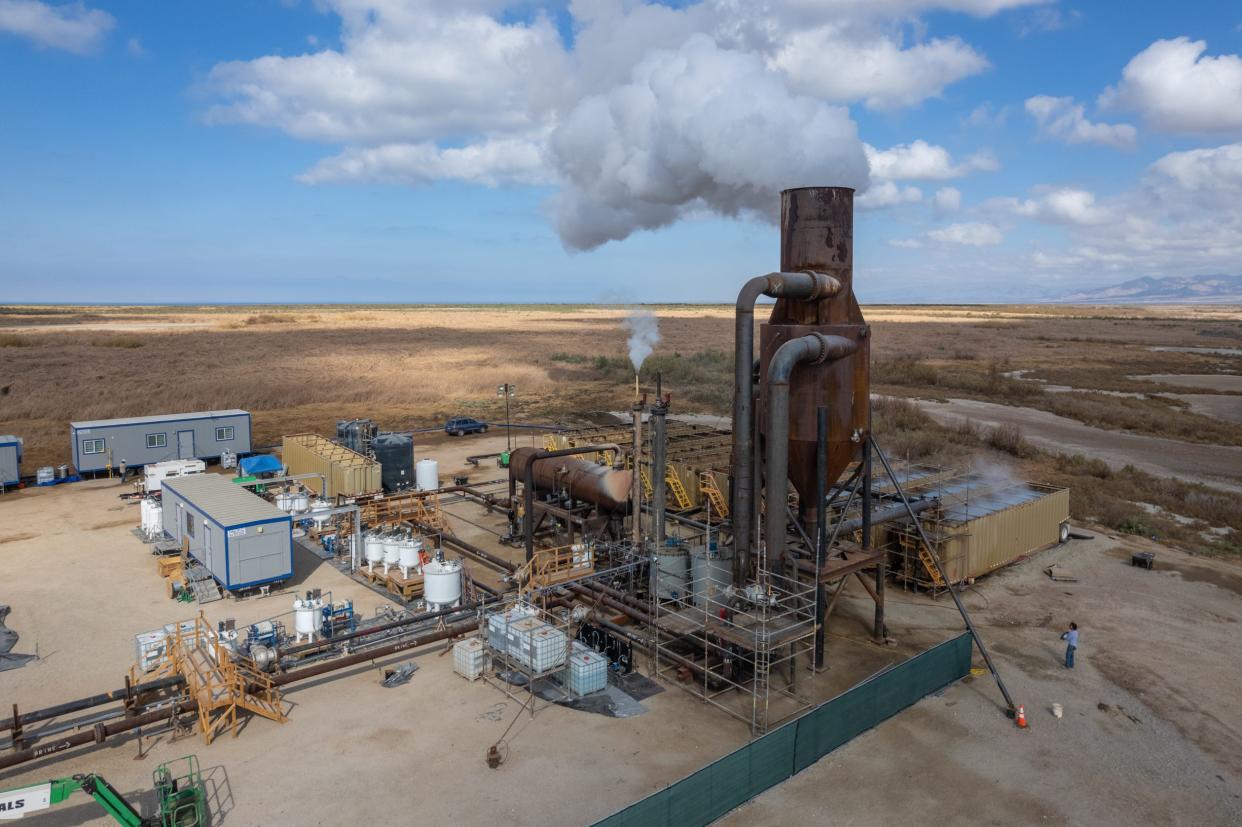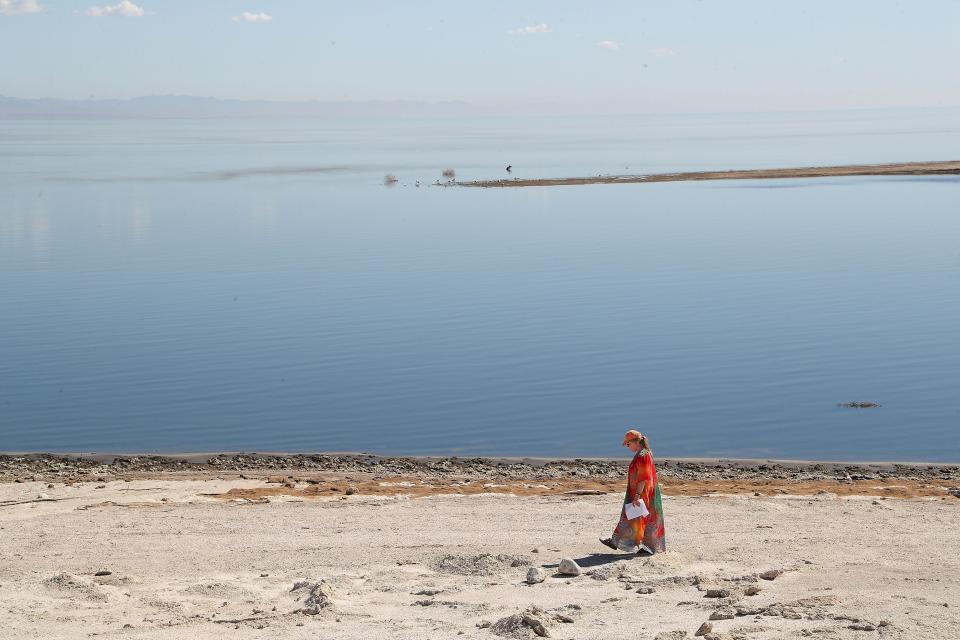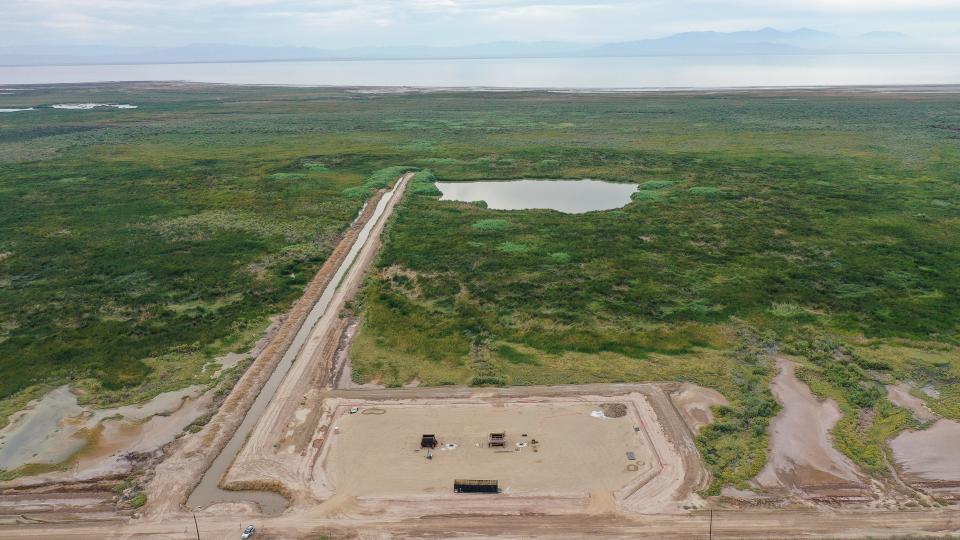State lithium panel seeks new economic zone, health study, other steps

California’s Lithium Valley Commission has finished a comprehensive report on how to maximize development of the critical mineral and create jobs and economic opportunities, while aiming to protect public health and benefit local communities.
The panel recommends a new southeastern California economic development zone be created, stretching from Imperial County north through the eastern Coachella Valley and northeast through Palo Verde, and that major federal and state funds be sought to aid lithium extraction and boost related industry in the zone, including battery manufacturing and recycling. Prodded by environmental, community and tribal representatives, the commission also wants studies done on possible health impacts from such industry to eastern Riverside County residents near the Salton Sea and on water supply and water quality, as well as easier public access to permits and regulatory documents.
Lithium is a key ingredient in batteries used in electric vehicles, power storage, smartphones and other products, and as the report notes, as much as a third of the world’s current demand sits in a massive geothermal brine reserve deep underground at the south end of the Salton Sea.
The 14-member commission was created in 2020 via legislation authored by Assemblymember Eduardo Garcia, D-Coachella. An advisory arm of the California Energy Commission, it is tasked with investigating and analyzing opportunities to stimulate recovery and use of the featherlight metal in California in environmentally and economically sustainable ways, and to produce a report and key recommendations.
The resulting nearly 100-page document was approved 8-1 late Thursday after another marathon meeting lasting nearly five hours, with only Commissioner Jim Hanks of the Imperial Irrigation District voting against it. Hanks said in earlier comments he thought the report did not focus enough on how to maximize lithium development, and instead overstated possible risks. The commission also approved more than a dozen recommendations on a variety of issues, often in divided votes.
Some of the most contentious language in the report, defining the exact boundaries of so-called Lithium Valley, was completely cut in the end. While state officials had defined it as a concept, commission vice chair Ryan Kelley, who is also the Imperial County supervisor representing the impoverished communities where the lithium reserve and nascent extraction industry is sited, has argued for more than a year that Lithium Valley is in Imperial Valley, and everyone knows it.
He harshly criticized proposed compromise language in the report that said, “For many in the region, the definition of Lithium Valley directly equates to Imperial Valley or Imperial County,” calling the sentence “a Trumpism” and “a slap in the face to the people that live there.”
A new southeast California economic zone?
Fellow commissioners did approve a recommendation by Kelley to ask the legislature to create a southeastern California economic development zone and seek state and federal funds to ensure related lithium battery manufacturing and other industry stays in Imperial County or the Palo Verde or eastern Coachella Valley areas. In an interview Friday, Kelley reiterated that while each area could compete for any resulting state or federal funds, California officials should collectively push to bring them to the region for manufacturing, industry and logistics related to lithium extraction, as opposed to having them flow to other states or Mexico.
“All these areas are economically distressed, particularly Palo Verde and Imperial County,” Kelley said. “Billions of federal funds are being allocated. Why should battery manufacturing plants be built in Arizona or Nevada …or Mexico? Where in West Virginia is there lithium? Yet they’re receiving federal funds for battery manufacturing.”
The recommendation was one of several urging California to push to create a so-called “circular” in-state economy related to lithium, from extraction through production, transportation and even recycling of batteries and other products. The report also calls for state and federal funding of badly needed infrastructure to implement commercial lithium production, including paved roads, transmission lines and repaired or new bridges. It urges the state to provide incentives to companies to use Project Labor Agreements with area unions, to do local hiring and to provide workforce training, but stopped short of asking the legislature to explicitly mandate them in exchange for public funds.

Health study, community advisory panel needed
A majority of the panel also voted to recommend a health impact analysis be done by a university or public agency of eastern Coachella Valley communities, and whether lithium extraction and related industry would add to air pollution and other woes already experienced by low income residents living there. A similar study is already underway for northern Imperial County communities. Many residents in these areas next to the rapidly drying Salton Sea, pesticide-laden farming and other industries already suffer high rates of asthma, elevated heart disease and other health issues.
Commissioner Frank Ruiz, head of Audubon California’s Salton Sea Program, speaking for the majority, said, “I’m totally in support of this one. … This brings peace of mind to many people who are ambivalent about the impacts of this industry.”

A recommendation to create a community advisory panel to continue to track lithium extraction and related industry narrowly passed 5-3 with specific language that environmental justice and tribal representatives be included, among others. A proposed recommendation to establish a centralized permit and regulatory tracking system for California lithium-related projects was defeated. But commission chairwoman Siliva Paz, who is executive director of Alianza Coachella Valley, a community advocacy group, successfully persuaded a majority of the commission that a finding should be added to the main report instead, that a central spot where the public can easily track and access information about lithium projects and related studies and permits should be created.
The panel also voted that studies should be done on water availability and water quality, among other recommendations.
The all-volunteer, 14-member commission struggled logistically until the end, with no quorum for the first portion of the meeting, and individual commissioners seeking to pull motions or change their votes as the roll was being called on certain recommendations. The report was supposed to be complete and submitted to legislature by Oct. 1. But the panel faces no penalties for not meeting the deadline. It will be sent by Dec. 1, after all of the changes and tweaks made Thursday are incorporated into a cleaned up final version by energy commission staff.
'You threaded a whole lot of needles'
Commissioners had mixed feelings about the final product.
“Overall I was happy to be a participant, and I enjoyed the opportunity,” said vice chair Kelley. “But I do believe the Lithium Valley Commission missed the mark in encouraging industry development of lithium and ancillary production of the resource.”
But others expressed satisfaction with the report, and gratitude to energy commission staff who are working nights and weekends to complete it.
“I gotta tell you, you all did a marvelous job … and you saved us a whole lot of compromise work. Really, really nicely done,” said Commissioner Jonathan Weisgall with Berkshire Hathaway Energy and a panel industry representative, addressing staff who crafted the report. “You threaded a whole lot of needles there.”
Chairwoman Paz concluded, “I thank you, I thank everybody who's been giving a lot of time… for the process, which could have been messy, but I think we did alright.”
There is no direct, online link to the final report, but when it is complete, it should be posted on the commission’s docket at https://bit.ly/3BFSEJT The draft report and proposed recommendations that were voted on can also be found on the docket by scrolling down and clicking on various links, but the final language and votes on whether they were approved as amended or defeated are not available.
Janet Wilson is senior environment reporter for The Desert Sun, and co-authors USA Today’s Climate Point newsletter. She can be reached at jwilson@gannett.com or on Twitter @janetwilson66
This article originally appeared on Palm Springs Desert Sun: State lithium panel finalizes lengthy report, seeks new economic zone, health and water studies

